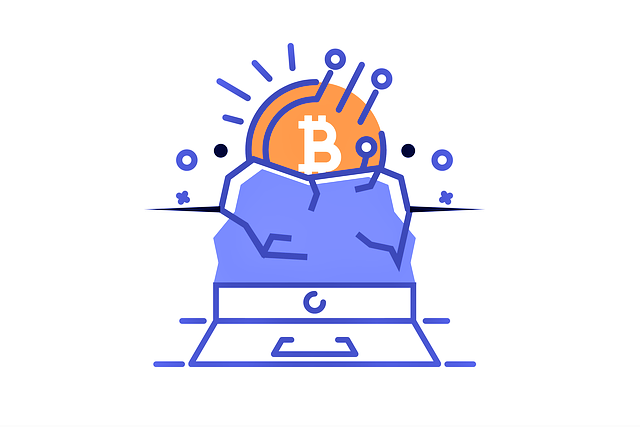The Virtual Data Rooms were created for saving and sending sub-rosa (confidential) data. In practice, they are secure online platforms that allow banks, issuers, and advisory firms to store, manage, and share sensitive documents.
Some issuing houses and investment banks even work with several VDRs at once because they allow them to keep large volumes of highly restricted information organised and accessible. With their aid, banks can prepare for selling or buying enterprises, or for complex M&A deal-making.
For Australian investment banks and corporate advisory firms in cities like Sydney, Melbourne, Brisbane, and Perth, virtual data rooms have become a standard tool in transactions involving:
- M&A deals (sell-side and buy-side)
- Capital raisings and private placements
- IPO and secondary listing on the ASX
- Bankruptcy, restructuring, and loan portfolio sales
- Project finance and infrastructure deals
So, there is a real sense in talking about the benefits of VDRs for investment banking — especially in the Australian market.
What Is an Investment Banking Data Room?
An investment banking data room is an online repository that functions as a secure location for storage and sharing of documents and data needed for investment banking deals.
For Australian deal teams, a VDR typically holds:
- Financial statements, management accounts, and forecasts
- Material contracts and customer/supplier agreements
- Legal documents (constitutions, shareholders’ agreements, IP registrations)
- HR, payroll, and employment contracts
- Regulatory and compliance documents relevant to ASIC, APRA, and other local regulators
- Transaction documents, process letters, and marketing materials (CIM/IM, teaser, etc.)
Data rooms are largely used to assist with due diligence, fundraising, and collaborating with all necessary parties during M&A transactions and capital markets deals.
VDRs are especially useful for investment bankers who need insight into which information is being viewed, by whom, and when. With audit trails and analytics, they can see where buyers are focusing and how engaged each bidder is.
Why Do Investment Bankers Use Data Rooms?
When engaging in an M&A transaction or capital raising, investment bankers must collect and share a huge amount of information with potential buyers, investors, and other stakeholders. The most efficient way to do so is by using a virtual data room.
Typically, an Australian investment bank will:
- Set up the virtual data room
They create a clear, logical folder structure (often following standard M&A due diligence checklists and ASX/ASIC requirements if the deal is linked to a listing). - Upload and organise documents
Drag-and-drop upload, bulk uploads, and auto-indexing help the team move from physical or network folders into the VDR quickly. - Add parties and manage access
Investment bankers compile a list of buyers, investors, and advisors, then assign tailored permissions (e.g., different levels of access for strategic buyers vs. private equity vs. legal advisers). - Manage Q&A and due diligence
The Q&A module is used to receive diligence questions, assign them internally to management or subject matter experts, and respond in a controlled, auditable way. - Monitor activity and adjust strategy
Bankers review which documents are most frequently accessed, which buyers are most active, and use this insight to drive deal strategy and negotiation.
Virtual data rooms provide value to both investment bankers and investors by facilitating a quicker and easier deal process, largely due to the impact that electronic storage and centralised communication have on the timing of due diligence.

M&A Deal-Making with Virtual Data Rooms
Why VDRs Outperform Traditional Repositories
The M&A operations are becoming more and more popular nowadays, and in Australia the mid-market and cross-border deal flow continues to be competitive. Having a lot of contestants, enterprises come across many difficulties. Their owners strive to reduce costs and avoid spending large sums on official trips or lengthy physical data room visits.
So, the VDR providers come to the rescue. And we should admit that they cope with their tasks much better than conventional repositories.
What possibilities do their users get?
- Strong information security
Firstly, they have an opportunity to be calm about the safety of the info. The deeds and documents are usually watermarked and encrypted. Access can be restricted by user, group, IP address, or time, and activity logs track everything. - Q&A for fast communication
Secondly, they have Q&A, which is a tool for carrying on talks between the different parties. Its advantage is that everything is done as quickly as possible and fully recorded. - Full visibility and monitoring
Thirdly, you can monitor everything: who logged in, which files they opened, how long they stayed, and whether they tried to print or download documents.
Usually, both sides of the transaction feel the benefits of dealing with a virtual repository. And the most decisive aspect of it all is the level of protection.
Some providers even run regular internal security checks on their staff and systems. But take proper account of the fact that they do not get the knowledge of the user’s passwords; security is achieved via encryption, access controls, and infrastructure, not by spying on users.
And one more thing that can surprise anybody: some vendors perform controlled “ethical hacking” on their own platforms from time to time to check the protection level. All of these measures are often proven by independent certifications (such as ISO/IEC 27001, SOC 2, etc.). If the virtual provider has such certifications, it means that it has been thoroughly tested and you can trust it with sensitive deal information.
Data Room Banking: Preparations for a Transaction
From Announcement to IPO or Sale
The announcement about the desire to complete some deal is often accompanied by a large documentation effort — in some cases, by an IPO or ASX listing process.
As a rule, this is a time-consuming process which implies huge work with documentation. In the past, this meant physical files and binders. Today, the data room provider’s team can help you:
- Systematize your archive
- Scan and digitise printed deeds
- Migrate them into the VDR in a clear, logical structure
Then, the interested parties can get access to the deeds by using a username and password, sitting in their offices in Sydney, Melbourne, London, New York, or Singapore.
Cross-Border Deals and Multilingual Interfaces
If the banks are carrying on talks with foreign enterprises — for example, Australian companies selling to Asian investors or global private equity funds — there is a high chance everyone will speak different languages.
In such situations, you do not have to worry because many repositories have multilingual interfaces. On top of that, some of them incorporate basic machine translation or at least support uploading translated versions of key documents, making cross-border due diligence much easier.
Bankruptcy and Restructuring
Using VDRs When Time Is Short
In the worst case scenario, if the bank or corporate borrower is going to declare bankruptcy or enter voluntary administration, it does not have a great deal of time to gather all the documents.
At the same time, it must send deeds and information to:
- Lenders and loan syndicate partners
- External administrators and receivers
- Bookkeepers and auditors
- Lawyers and court staff
- Judges and restructuring experts
Here you can also take advantage of data rooms which are ready to hasten any operations with documentation. A data room allows the restructuring team to:
- Centralise all documents in one secure place
- Control who sees what (e.g., separate lender groups)
- Keep a clear audit trail for regulatory and court purposes
- Provide fast, 24/7 access for stakeholders in multiple time zones
For Australian workouts and distressed M&A, a well-structured data room can be the difference between a controlled, orderly process and an expensive, chaotic one.
Key Benefits of Investment Banking Data Rooms (Australian Context)
1. Compliance and Governance
The use of reputable investment banking virtual data rooms helps ensure that compliance standards are met. For Australian institutions, this includes alignment with:
- Data protection expectations under the Privacy Act and Australian Privacy Principles
- Internal governance rules set by boards and risk committees
- Security expectations from regulators and major counterparties
Using a VDR with strong governance tools (permissions, audit logs, legal holds) supports the bank’s compliance posture.
2. Security
With the amount of personal and financial information included in an investment banking virtual data room, data security is essential.
Using a VDR, admins can:
- Assign specific access privileges based on role and responsibilities
- Allow internal deal teams to edit or upload, while external parties are limited to view-only access
- Apply digital watermarks and disable screenshot/print/download where necessary
This greatly reduces the risk of third-party information theft or accidental disclosure.
3. Efficiency and Speed
With the use of a virtual data room, investment banking deals are performed more efficiently and, ultimately, closed faster.
When everything is located in a centralised platform, there is transparency, and investment bankers can focus on deal strategy instead of chasing documents.
Features that improve efficiency include:
- Drag-and-drop and bulk uploads
- Automatic indexing and file versioning
- Fast viewer performance (especially important for large PDFs or Excel models)
- Integration with email and productivity tools
4. Collaboration and Real-Time Updates
Virtual data rooms (especially those with project management features) allow for increased collaboration between investment bankers, buyers, sellers, and advisors.
All activity in the M&A data room happens in real time, so users always see the latest version of each document.
5. Analytics and Buyer Insight
Real-time analytics inside the VDR give deal teams heightened oversight:
- Which documents are the most viewed?
- Which bidders are most active (logins, time spent, page views)?
- Are there areas where buyers keep asking questions (potential red flags)?
Access to this data improves transparency and helps investment bankers anticipate issues, gauge buyer interest, and prioritise their time.
6. Version Control and Document Control
Modern data rooms for investment banking make sure everyone is looking at the latest version of a file, while still keeping an archive of historical versions.
Investment bankers can:
- Allow users to see only the most current version
- Grant read-only or no-download access
- Roll back or review old drafts if needed
This speeds up due diligence and eliminates confusion over which draft is final.
How to Choose the Best Investment Banking VDR in Australia
When choosing the best investment banking VDR, Australian banks and advisory firms should consider:
- Pricing structure
Prefer flat-rate pricing (monthly or annual) with unlimited users and data, to avoid surprise per-page charges — especially relevant for document-heavy deals. - Ease of use and intuitive interface
The platform should be easy to learn for all parties, from senior executives to external legal teams. - Performance and uptime
Fast upload/download and reliable uptime are vital, particularly when bidders are in multiple time zones. - Detailed audit logs and reporting
Easy-to-use dashboards and exportable reports help track access during and after the deal. - Deal-specific features
Look for features that support the full deal lifecycle: M&A, capital raising, IPOs, loan syndication, bankruptcy, and restructuring. - Document and access control
Granular permissions, watermarks, SSO (single sign-on), and IP restrictions are essential to protect sensitive data. - Data hosting and local support
For Australian banks, it’s often preferable to choose a provider that offers local data centres (or at least APAC hosting options) and support during Australian business hours.
Why Virtual Data Rooms Matter for Australian Investment Banking
To deduce an inference, we can admit that virtual data rooms can serve as a great instrument for lightening and quickening the tasks issuing houses and investment banks face every day.
In the Australian context, VDRs help:
- Compete effectively in a crowded M&A and capital markets landscape
- Run efficient, compliant processes for ASX listings, takeovers, and restructurings
- Collaborate securely with local and international investors across multiple time zones
- Protect sensitive client information while giving buyers the access they need



